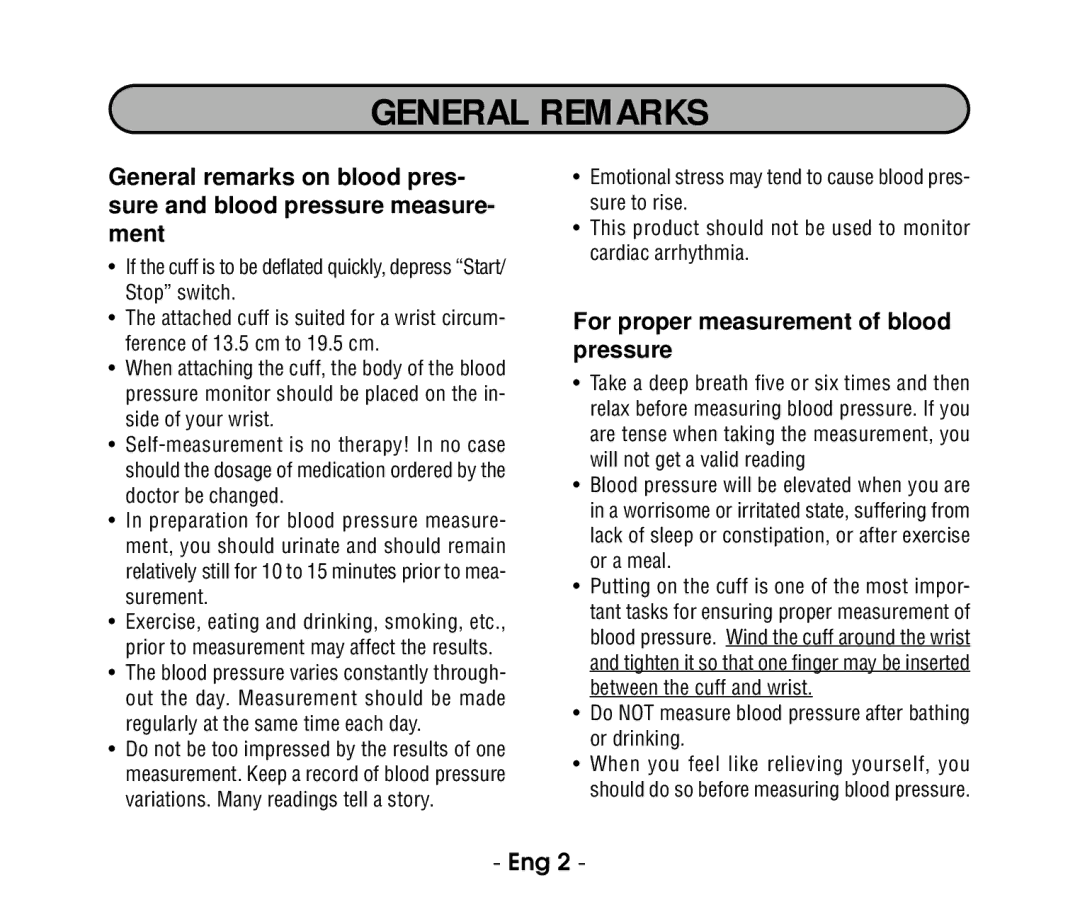GENERAL REMARKS
General remarks on blood pres- sure and blood pressure measure- ment
•If the cuff is to be deflated quickly, depress “Start/ Stop” switch.
•The attached cuff is suited for a wrist circum- ference of 13.5 cm to 19.5 cm.
•When attaching the cuff, the body of the blood pressure monitor should be placed on the in- side of your wrist.
•
•In preparation for blood pressure measure- ment, you should urinate and should remain relatively still for 10 to 15 minutes prior to mea- surement.
•Exercise, eating and drinking, smoking, etc., prior to measurement may affect the results.
•The blood pressure varies constantly through- out the day. Measurement should be made regularly at the same time each day.
•Do not be too impressed by the results of one measurement. Keep a record of blood pressure variations. Many readings tell a story.
•Emotional stress may tend to cause blood pres- sure to rise.
•This product should not be used to monitor cardiac arrhythmia.
For proper measurement of blood pressure
•Take a deep breath five or six times and then relax before measuring blood pressure. If you are tense when taking the measurement, you will not get a valid reading
•Blood pressure will be elevated when you are in a worrisome or irritated state, suffering from lack of sleep or constipation, or after exercise or a meal.
•Putting on the cuff is one of the most impor- tant tasks for ensuring proper measurement of blood pressure. Wind the cuff around the wrist and tighten it so that one finger may be inserted between the cuff and wrist.
•Do NOT measure blood pressure after bathing or drinking.
•When you feel like relieving yourself, you should do so before measuring blood pressure.
- Eng 2 -
